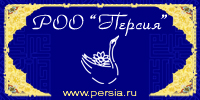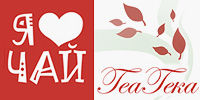Oriental Collection № 4/2014
 |
Summary A special issue of the Oriental Collection magazine (№ 4/2014) has been titled «The Bakhchisaray Album». This is an illustrated story of the Bakhchisaray Historical and Cultural Reserve, which comprises 138 monuments of material and spiritual culture of the Crimean Tatars and other people of the Peninsula. The author of the idea and the pro ject coordinator is a Doctor of Historical Sciences Iliya Zaytsev.
Greetings by the Chairman of the State Dumaand the Chairman of the Russian Historical Society Sergey Naryshkin opens the forthissue of 2014.
Andrey Petrov. The Memory of Crimea. Numerous and complex changes in the historical destiny of Crimea effected the formation of its cultural heritage.
«Mission of the Bakhchisaray Reserve» — under this headline appears an interview with the Reserve’s Director General Elmira Ablyalimova. The interview tells about work and plans of the major Institution for Culture, Education and Research of Crimea, which is being intensively integrated into the Museum Community of Russia.
Rustem Aminov. The Palace Museum on the Winds of Time. Main stages of history and development of the Reserve’s collection.
Reshat Aliyev. History captured in photographs. In 1880, the Russian photographer Ivan Boldyrev completed shooting of the interiors of the Khan Palace and the city of Bakhchisaray. This photo album is of great historical value.
Elmira Abibullaeva. What the Kadiasker notebooks told about. Thanks to the extant court registries it became possible to imagine the life of Bakhchisaray of the 17—18th centuries, activity and social structure of the townspeople.
Iliya Zaytsev. The Fountains of New Padishahs. On the territory of the Reserve there is a fountain in honor of the Russian Emperor Alexander I with his tugra (emblem monogram). Another fountain that has not survived to our time was dedicated to Alexander III.
Olga Zheltukhina. Looking through watercol or miles... In the scientific heritage of the Russian scientist encyclopedist of German origin Peter Simon Pallas (1741—1811) there are several valuable works on ethnography of Crimea.
Mikhail Kizilov. The Reading and the Worshipping the Scripture. The article tells about the Crimean Karaims — the Jews who migrated to Crimea in the 15th century and adopted the language and some elements of culture of the Crimean Tatars.
Sergey Borisov. An Unexpected Discovery. The author of the article has found out that one of the paintings of the famous Russian artist Vasiliy Vereshchagin depicts the area of Crimea.
Alexey Voloshinov, Tatiana Voloshinova. The Mausoleum to beautiful Janika. The history of the buildings and architectural specificity of Dyurbe (mausoleum) to Janikakhanym, a daughter of Khan Tokhtamysh, whose personality became embroiled in many legends.
Elmira Abibullaeva, Selvina Seitmemetova. «The Enlightened People is Immortal...» The words of an outstanding educator and publish er Ismail Gasprinsky (1851—1914) are reproduced in the title of the article. He elaborated new teaching methods and textbooks for the Crimean Tatar schools.
Mamut Churlu. The Eyes of the Earth. The veneration of the water since ancient times had played an important role in the culture of the Crimean Tatars. Anyone who wanted to do good work for the salvation of his soul and keep the memory of their deceased parents, should have built a fountain — Cesme.
Lenara Chubukchieva. The Magical World of Filigree. Jewelry items made of metal appear in the Crimean Tatar culture as charms and gifts, they also serve as a source of protective force.
Safie Abduramanova. A Decent Fashionista. Headgear in the national costume of the Crimean Tatars served not only an aesthetic purpose but also performed certain symbolic and ceremonial function. The head veil became one of the main attributes of women’s everyday and the output wear.
Oksana Alpashkina. Elegant tables beneath the patterned covers. One of the samples of decorative and applied arts of Crimea is kursyu — fine low tables with inlaid lids.
Zera Mamutova, Anna Polkanova. Ceilings reminding a carpet and the sky. Few artistically decorated wooden ceilings, preserved until our time, bear witness to the high art of the Old Masters.
Anna Polkanova, Edie Mustafayeva. Stones with tender names. Gorgeous women’s jewellery inlaid with pearls, mother of pearl, gemstones and other minerals arouse admiration.
Ekaterina Ermakova. Haytarma means «return». The exhibition of the Crimean Tatar Decorative and Applied Art, held in Moscow, presented works by modern artists that attracted attention of numerous visitors.
I. Robadovsky. Pushkin as a reason. A review of illustrated editions of the poems of A. S. Pushkin «The Fountain of Bakhchisaray», stored in the funds of the Russian State Library. A review of books and Internet resources on the topic of the issue completes the publication.
Translated by Natalia Mishan.






